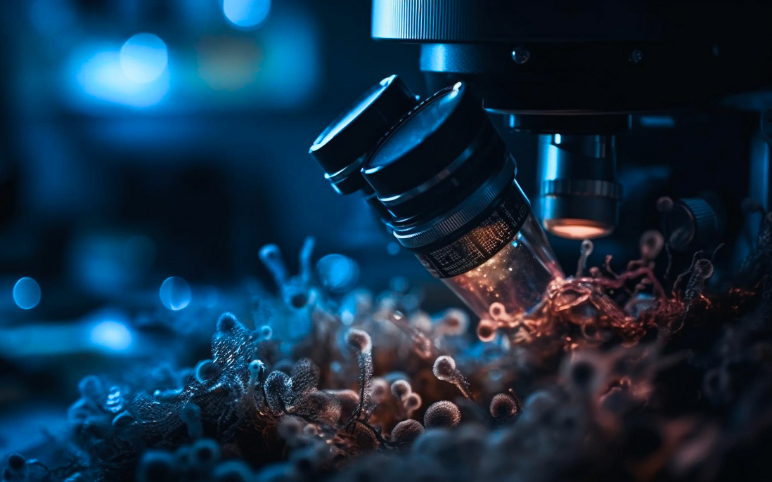John Brunelle, PhD, COO of Ventris Medical added: “The Backpack® technology platform is our latest venture in enhancing the surgeon experience and fusion outcomes. The sophisticated design of the containment system allows for precise delivery and retention of our clinically validated biphasic granules and allograft fibers, ensuring a more consistent healing response at the fusion site. This latest milestone establishes yet another platform for future product developments and further validates Ventris as a key innovator in the orthobiologics space.”
Backpack® AF with Allocell® AF Allograft Fibers features a unique 100% biologic graft system, where osteoinductive allograft fibers are fully enclosed within a collagen mesh pouch. This innovative design is the first of its kind, with both the containment pouch and allograft fibers contributing to the bone remodeling process at the graft site. The Allocell® AF allograft fill provides a scaffold-like structure that supports bone cell attachment and proliferation, facilitating the natural healing process. Additionally, the osteoinductive properties of the Allocell® AF fibers actively promote the differentiation of stem cells into bone-forming cells, enhancing bone regeneration. Supplied in a ported pouch for easy hydration, Backpack® AF is ready for immediate use, streamlining the surgical procedure.
As per DelveInsight’s “Bone Graft and Substitutes Market Report”, the global bone graft and substitutes market was valued at USD 3,786.25 million in 2024, growing at a CAGR of 5.88% during the forecast period from 2025 to 2032 to reach USD 5,957.71 million by 2032. The increasing prevalence of bone-related disorders and trauma cases, coupled with a rising demand for bone grafts in dentistry, is significantly boosting the global market for bone grafts and substitutes. As bone diseases such as osteoporosis and bone fractures become more common, particularly among the aging population, the need for effective bone regeneration and repair solutions has surged. The growing geriatric population, which is more prone to bone degeneration, fractures, and joint issues, further drives demand for bone grafts, especially in orthopedic and dental procedures. Additionally, the increase in product development activities, with innovations in synthetic, allograft, and xenograft materials, is enhancing the effectiveness and availability of bone graft substitutes. These factors collectively contribute to the expansion of the bone graft and substitutes market, with more advanced, biocompatible, and cost-effective solutions being introduced to meet the rising demand during the forecast period from 2025 to 2032.
Orthocell Received US FDA 510(k) Clearance for Remplir™ Nerve Repair Product, Preparing for Market Launch
On April 04, 2025, Orthocell is pleased to announce that the US Food and Drug Administration (FDA) has granted regulatory clearance under the 510(k) pathway for its innovative nerve repair product, Remplir™. This significant milestone opens the door for Orthocell to enter the rapidly growing US nerve repair market, which is valued at approximately US$1.6 billion. The company is strategically advancing its US market launch, with a robust production ramp-up already in progress.
Orthocell CEO and MD, Paul Anderson, said, “I’m delighted to announce we have received FDA clearance for our market-leading nerve repair product. We have been preparing in advance for this pivotal milestone, ramping up production from our facility in Perth and we have significant levels of inventory in place to deliver on early sales orders. Our sales, marketing and education team have made great progress identifying key opinion leaders, reputable reference sites and, most importantly, the distributors that we will work with to get Remplir into surgeons’ hands. We expect strong product adoption in the US, having experienced rapid sales traction in existing markets driven by the excellent feedback from surgeons in Australia, New Zealand and Singapore”
Orthocell has established a comprehensive operational infrastructure, including outsourced warehousing, order processing, and shipment systems, to ensure seamless delivery and support for customer sales orders. This regulatory achievement positions Orthocell to capitalize on the expanding demand for advanced nerve repair solutions in the United States.
As per DelveInsight’s “Nerve Repair And Regeneration Market Report”, the global nerve repair and regeneration market was valued at USD 6,497.47 million in 2023, growing at a CAGR of 9.31% during the forecast period from 2024 to 2030. The increase in demand for nerve repair and regeneration products is predominantly attributed to the increasing incidence of nerve injuries, rising prevalence of lifestyle disorders such as diabetes and hypertension, and others. Moreover, technological advancements in the nerve repair product portfolio and high product approvals in recent times, among others are also some of the factors contributing to the global market growth for nerve repair and regeneration. Therefore, the above mentioned factors are expected to propel the overall market growth of the nerve repair and regeneration market in the forthcoming years.
ICU Medical Launched Its New Category of Infusion Devices With FDA Clearances of Plum Solo™ and Plum Duo™ Precision IV Pumps
On April 7, 2025, ICU Medical Inc., a global leader in innovative medical devices, has received 510(k) regulatory clearance from the U.S. FDA for its Plum Solo™ precision IV pump. This single-channel addition complements the dual-channel Plum Duo™. Additionally, ICU Medical secured 510(k) clearance for updated versions of the Plum Duo precision IV pump and LifeShield™ infusion safety software. These clearances mark the initial launch of the ICU Medical IV Performance Platform, introducing a new category of precision IV pumps and expanding the platform’s capabilities.
Unlike traditional pumps that depend on specific setups and conditions for precise delivery, precision IV pumps are engineered to reduce delivery variability and meet the growing demand for accurate data in modern patient care. Leveraging the innovative cassette technology from the Best in KLAS award-winning Plum 360™, the Plum Solo and Plum Duo precision IV pumps deliver ±3% accuracy in real-world conditions. These pumps eliminate the infusion inconsistencies typical of traditional devices, offering clinicians predictable performance and dependable infusion documentation.
“Precision IV pumps represent a critical step forward for infusion therapy,” said Chad Jansen, corporate vice president and general manager of ICU Medical Infusion Systems. “With the Plum Solo and Plum Duo, we’re introducing more than just a new device category—we’re setting a new standard. Healthcare teams can now trust not only the delivery of their medications but also the infusion data that supports their decisions, knowing it reflects what patients actually receive.”
The Plum Solo and Plum Duo offer healthcare systems the flexibility to select the ideal configuration for their infusion needs, optimizing device footprint without sacrificing performance or safety. Both devices are compatible with whole blood and blood products, delivering consistent ±3% accuracy. They also eliminate variability caused by external factors such as infusion setup, temperature, or hospital elevation, ensuring reliable and precise infusion delivery in diverse clinical environments.
According to DelveInsight’s “Infusion Pumps Market Report”, the infusion pumps market was valued at USD 13.80 billion in 2023, growing at a CAGR of 9.54% during the forecast period from 2024 to 2030, to reach USD 23.85 billion by 2030. This rise in chronic conditions often requires prolonged and precise medication management, which infusion pumps can provide. These devices ensure accurate and consistent delivery of medications, vital for managing complex treatment regimens associated with chronic diseases. Additionally, infusion pumps, particularly those designed with advanced safety features and sterile pathways, play a crucial role in minimizing the risk of infections in hospitals. The demand for infusion pumps that enhance patient safety by reducing the incidence of HAIs is a strong driver in the market. Infusion pumps are essential in surgical settings for administering anesthesia, pain management, and post-operative care. The need for precise and controlled delivery of medications during and after surgery drives the demand for sophisticated infusion pump systems. Furthermore, infusion pumps that support remote monitoring enable healthcare providers to manage patients’ conditions effectively from a distance. This capability is especially crucial for chronic disease management and long-term therapies. The increased demand for remote patient monitoring solutions, therefore, significantly boosts the market for infusion pumps. Additionally, the continuous influx of new products and technologies ensures that the market remains dynamic and innovative, during the forecast period from 2024 to 2030.
Anaconda Biomed Enrolled First U.S. Patient in the ATHENA Clinical Trial Evaluating ANA Funnel Catheter for Ischemic Stroke Treatment
On April 3, 2025, Anaconda Biomed, S.L., a medical technology company focused on developing next-generation neurothrombectomy devices, announced the enrollment and treatment of the first U.S. patient in its ATHENA clinical trial. The procedure was performed by Dr. Shahram Majidi, Associate Professor of Neurosurgery, Neurology, and Radiology at the Icahn School of Medicine at Mount Sinai, New York.
ATHENA is a global, randomized pivotal study involving 327 patients, designed to evaluate the safety and effectiveness of Anaconda’s proprietary ANA Funnel Catheter™. The device is intended for use during stent retriever-based thrombectomy to aid in clot removal by restricting blood flow during retrieval. This allows for simultaneous aspiration and reduces the risk of clot fragmentation at capture in patients with large vessel occlusion acute ischemic stroke.
Anaconda’s funnel catheter featured the largest capture diameter then available for neuroendovascular thrombectomy. Feasibility studies conducted with the device demonstrated high rates of reperfusion and first-pass success, along with a strong safety profile – data that had been instrumental in supporting the company’s Investigational Device Exemption (IDE) submission. In September 2024, Anaconda received IDE approval from the U.S. Food and Drug Administration to evaluate the ANA Funnel Catheter in the ATHENA trial.
“We have long recognized the impact of fast and complete reperfusion in stroke patients, and we are delighted to have initiated this important clinical trial for examining the role that flow restriction with funnel catheter can play in enhancing endovascular thrombectomy and potentially improving outcomes for stroke patients,” said Dr. Majidi.
The ANA5™ is a funnel catheter designed to enhance neurovascular procedures by facilitating the delivery of intravascular devices, including stent retrievers and microcatheters. It features a radiopaque, self-expanding funnel that is coated with a continuous sealing layer, allowing for temporary local flow restriction upon deployment. This design helps optimize the efficiency of procedures by providing better control during clot retrieval and other neurovascular interventions.
According to DelveInsight’s “Neurovascular Thrombectomy Devices/Neurothrombectomy Devices Market Report”, global Neurovascular Thrombectomy Devices/Neurothrombectomy Devices Market was valued at USD 722.78 million in 2023, growing at a CAGR of 6.15% during the forecast period from 2024 to 2030 to reach USD 1033.33 million by 2030. The rise in demand for Neurovascular Thrombectomy Devices/Neurothrombectomy Devices is predominantly imputed to the rising prevalence of neurovascular disorder across the globe which require Neurovascular Thrombectomy Devices/Neurothrombectomy Devices for their treatment such as ischemic stroke and hemorrhagic stroke, growing burden of old age population. In addition, shifting key players focus towards development of technologically advanced product and initiatives to increase awareness regarding neurovascular diseases and their prevention are some of the factors among others that are likely to upsurge the market for Neurovascular Thrombectomy Devices/Neurothrombectomy Devices.
OrthoPediatrics Corp. Expanded Scoliosis Portfolio with Launch of VerteGlide™ System
On April 8, 2025, OrthoPediatrics Corp., a company focused exclusively on advancing the field of pediatric orthopedics, announced the U.S. launch of the new VerteGlide Spinal Growth Guidance System, used to treat Early Onset Scoliosis (“EOS”). This marked the company’s 80th system designed to address musculoskeletal issues in children.
VerteGlide was a guided growth technology developed for children with Early Onset Scoliosis, a severe and sometimes life-threatening condition affecting kids under the age of 10, who often experienced pulmonary and digestive dysfunction due to the deformity. VerteGlide represented the second in a series of technologies OrthoPediatrics was developing to meet the needs of this unique patient population suffering from the debilitating and life-threatening consequences of EOS. With its unique design, the VerteGlide Spinal Growth Guidance System was intended to allow for deformity correction while minimizing the number of repeat surgeries needed until skeletal maturity. Following recent FDA clearance of the device, the Company prepared for a limited launch and anticipated beginning initial surgeries with select children’s centers during the summer.
OrthoPediatrics Scoliosis division President, Greg Odle commented “We are excited to introduce another new product to treat children with EOS. The team has been working with key opinion leaders from the surgeon community to identify new technologies that will help this particularly vulnerable patient population. VerteGlide’s launch represents our commitment to treating the entire disease state of scoliosis.”
According to DelveInsight’s “Adult Spinal Deformity Market Report”, the Adult Spinal Deformity (ASD) market is estimated to grow at a CAGR of 5.57% during the forecast period from 2025 to 2032. The demand for adult spinal deformity is primarily being boosted by the increasing prevalence of spinal cord injuries and disorders around the globe. Additionally, increasing incidences of obesity and sedentary lifestyles and growing advancement in surgical techniques and technologies are some of the key factors, which are contributing to the growth of the adult spinal deformity market during the forecast period from 2025 to 2032.
3D Systems’ Solution Enabled World’s First Facial Implant Manufacturing at Point-of-Care
On April 8, 2025, 3D Systems announced that, in collaboration with University Hospital Basel (Switzerland), the Company’s unique point-of-care additive manufacturing solution had been used to design and produce the world’s first Medical Device Regulation (MDR)-compliant 3D-printed PEEK facial implant. Prof. Florian Thieringer and Dr. Neha Sharma, along with their team of biomedical engineers, had successfully designed and manufactured a custom device to address a patient’s unique needs using 3D Systems’ technology and manufacturing expertise. The implant had been used in a successful surgery completed at the hospital on March 18, 2025. Production of the first MDR-compliant facial implant had been completed using VESTAKEEP® i4 3DF PEEK by Evonik on 3D Systems’ EXT 220 MED. The cleanroom-based architecture of the printer and simplified post-processing workflows had enabled efficient production of patient-specific medical devices directly at the hospital.
For more than a decade, surgeons had used VSP® surgical planning solutions that combined best-in-class digital workflows with the industry’s broadest additive manufacturing portfolio of printers and materials to deliver comprehensive patient-matched solutions. Bringing together surgeons, engineers, and technology in the clinical setting had allowed for the immediate development of patient-specific treatments, overcoming the limitations of standard medical devices. As a result, healthcare providers had improved outcomes, increased efficiency, and lowered the cost of care.
“Our goal is always to provide the best possible care for our patients,” said Prof. Thieringer. “Being directly involved in both the design and manufacturing of patient-specific implants — right here in our hospital — allows us to tailor treatments precisely to individual needs, respond faster, and improve surgical outcomes. The ability to produce implants on demand represents a new era in personalized care.”
The first 3D-printed PEEK facial implant, manufactured at the point-of-care using 3D Systems’ EXT 220 MED, represents a breakthrough in personalized medical solutions. This innovative approach enables close collaboration between surgeons, engineers, and technology, allowing for the creation of tailored implants that address the unique and complex needs of individual patients. By producing the implant on-site, the process ensures faster, more precise solutions for facial reconstruction and other medical procedures.
According to DelveInsight’s “Facial Implants Market Report”, the facial implants market was valued at USD 2.56 billion in 2023, growing at a CAGR of 8.02% during the forecast period from 2024 to 2030 to reach USD 4.06 billion by 2030. The facial implants market is experiencing significant growth due to the increasing instances of acute & chronic disorders including dental disorders, rising product developmental activities, growing preference for minimally invasive procedures, and availability of a wide variety of facial implants that are acting as major factors contributing to the overall growth of the facial implants market during the forecast period from 2024 to 2030.



